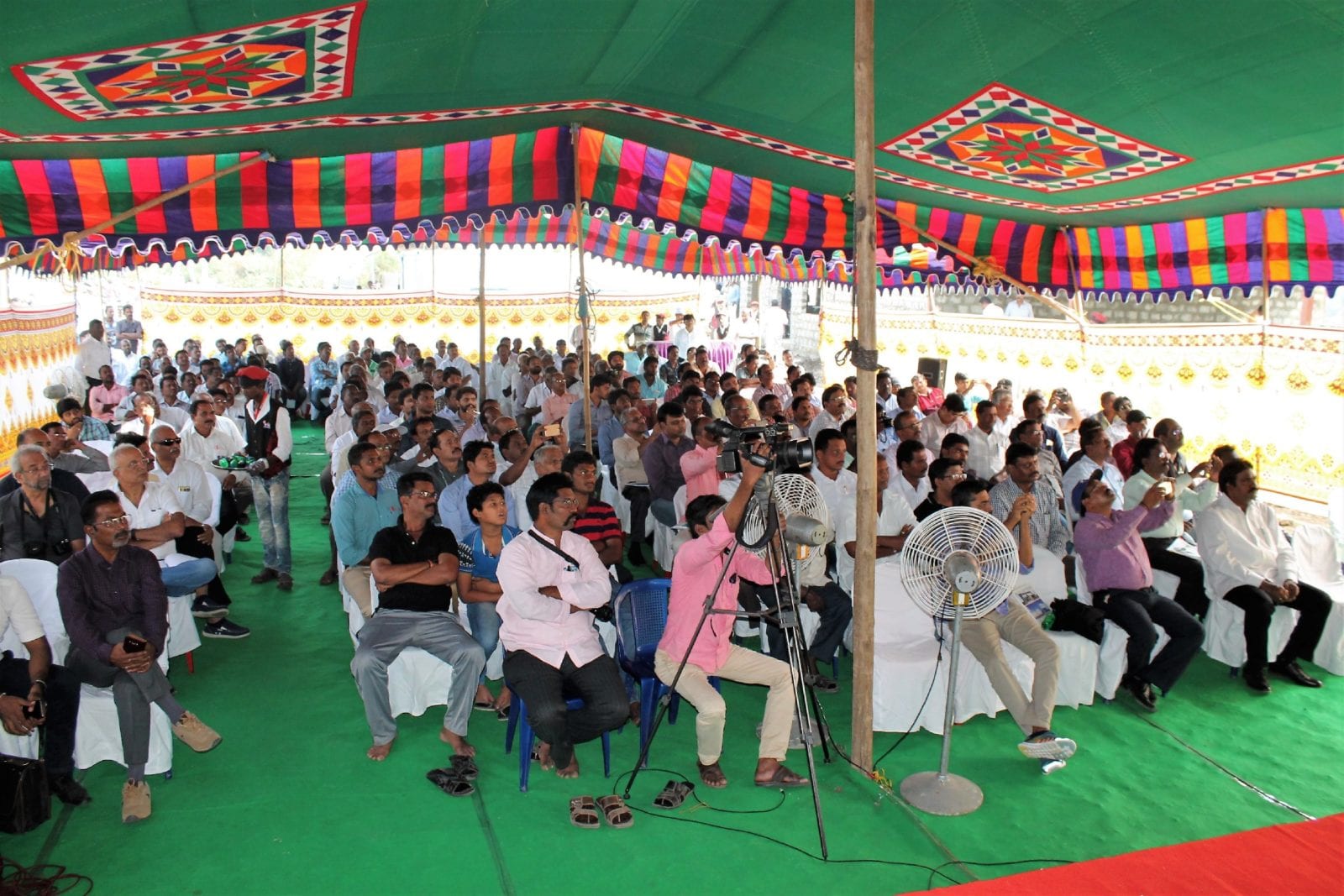IPRS Field Day Helps Popularize System to ASC Aquaculture Industry
- Category:
- Aquaculture
- General News

The IPRS (In-Pond Raceway System) developed with the help of Auburn University and commercially tested by USSEC in China for several years, is a popular, modern technology that enhances aquaculture production, increases the use of soy-based diets, and demonstrates environmental sustainability.
The first IPRS in India / Asia Subcontinent (ASC) region was funded by USSEC’s World Wide Aquaculture project and was completed in September 2017, in association with its Indian cooperator Lusot Aqua / Unibait Feeds. After allowing the construction structure to be completed and after conducting a few fluid dynamic calculations, USSEC India and Lusot Aqua conducted a field day to popularize this new technology to aqua stakeholders who traveled from ten Indian states. About 150 participants attended the field day on January 10. Most potential investors were extremely interested in the construction and operational details. USSEC and Lusot Aqua also conducted a seminar / discussion forum at the site, which helped share more technical details about the project. The TV channels and press present at the Field Day provided wide coverage of the technology.
Umakanth, USSEC Aquaculture Consultant, who coordinated the implementation of the project, stated that it would serve as a model for all ASC countries, especially Bangladesh, which has the second highest potential for aquaculture in the ASC region. USSEC learned from its experiences in China that fish production could be enhanced up to eight times in the IPRS as compared to a traditional pond-based fish farming system. Umakanth added that the IPRS would help utilize more U.S. Soy when this system is implemented in Bangladesh and India, which will create a higher demand for U.S. Soy imports in the long run.
The two main highlights of the IPRS system is that it helps re-use water and incorporates a sound system to remove and utilize solid wastes. Removal of solid wastes helps maintain and preserve water quality.
Popularization of the technology will be planned in three different stages, USSEC Deputy Regional Lead – ASC Vijay Anand said. The first phase is the completion of construction and conducting the field day so the industry can see the system before water is filled into the pond. The second stage for information sharing will take place while fish cultivation and feeding is in operation. The third and final event would be at harvest where all can physically see the performance of the system and learn about the math on return on investment (ROI).
Dr. Anand told the audience that the IPRS system combines and brings in advantages from four well-known aquaculture systems, namely the raceways, cages, re-circulatory and the pond-based fish farming systems.
The ASC region eagerly looks forward to the successes of IPRS systems, which in turn will bring additional benefits for the U.S. Soy industry.










